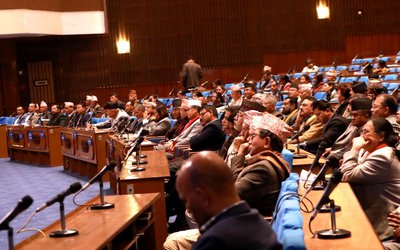More on News





A Government-led Nepal Food Security Monitoring System study, conducted together with WFP, found that food security in earthquake-affected districts has improved since the humanitarian response began. This improvement is attributed in large part to the food assistance provided after the quake. The study found that 529,000 people are now in need of immediate food assistance, a significant drop from the 1.4 million people in need after the earthquake.
According to a press release issued by WFP, its emergency operation moves into its final phase and WFP emphasizes support to the local economy whenever this is possible purchasing the products locally.
“Since June, WFP has purchased US$ 2.3 million worth of food within Nepal. This represents more than half of WFP’s total food purchases to date,” said a press release.
The Government-led Nepal Food Security Monitoring System (NeKSAP), in cooperation with WFP and supported by the European Union, has released the results of its latest food security study in the earthquake-affected districts of Nepal.
The major finding was that 529,000 people are now in need of immediate food assistance. This is a significant drop from the 1.4 million people calculated in the last study, where NeKSAP had found that the earthquake had a profound impact on the food security of these districts, with some areas showing significant deteriorations in food security post-quake.
The July study has found that food security has improved by as much as two food security phases in some earthquake-affected districts. These improvements have been attributed to the large amounts of humanitarian and food assistance provided by the Government of Nepal and humanitarian organizations in the weeks and months after the earthquake.
Regular supplies of food coming into still-functioning markets, and continued road access were also cited for improved food security. However, the outlook for the current four-month period (mid-July to mid-November 2015) still remains precarious, with the impact of the earthquake on livelihoods and food security possibly intensified by monsoon -induced landslides and road blockades and limited recovery activities after the earthquake.






